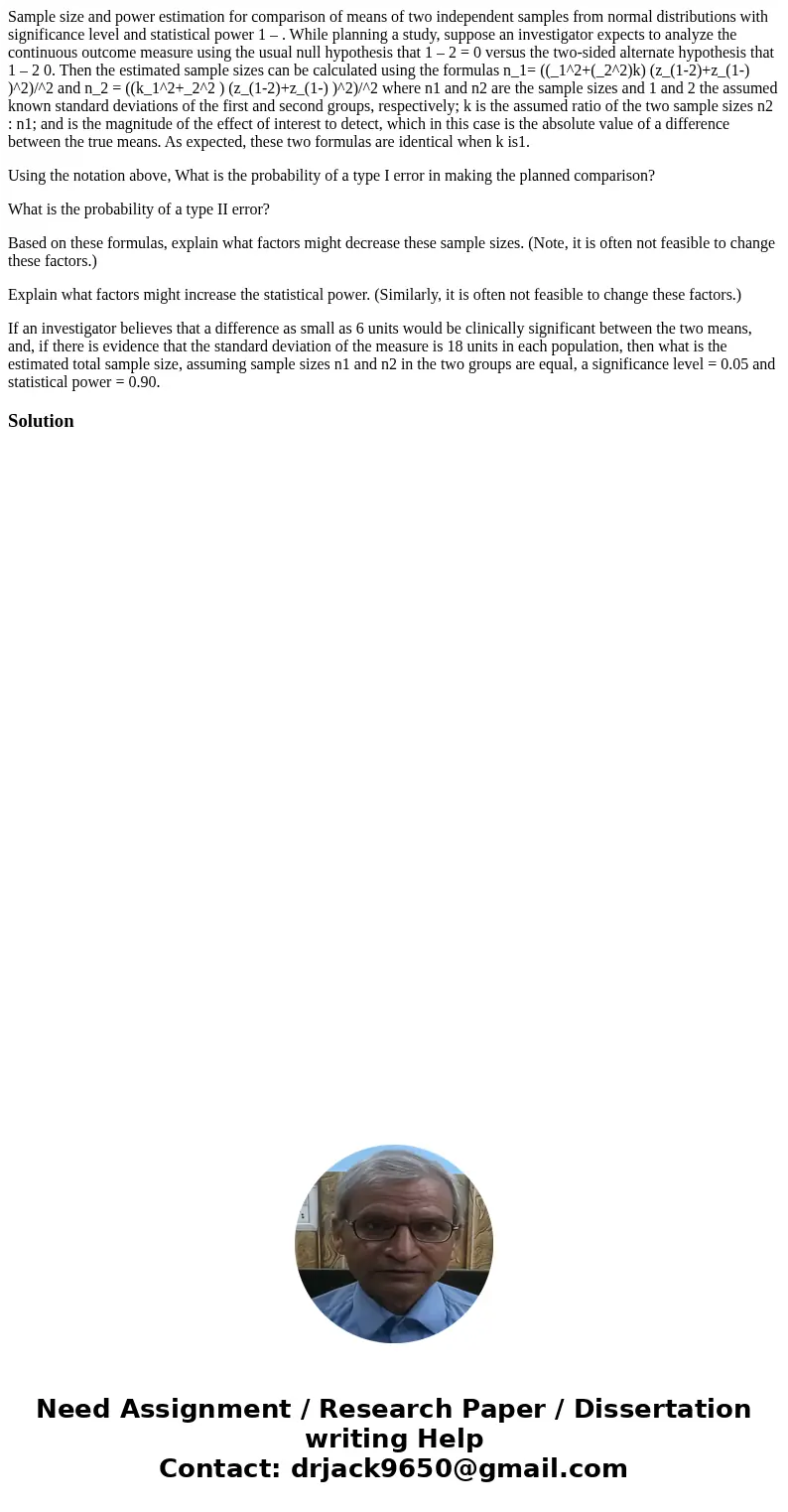Sample size and power estimation for comparison of means of
Sample size and power estimation for comparison of means of two independent samples from normal distributions with significance level and statistical power 1 – . While planning a study, suppose an investigator expects to analyze the continuous outcome measure using the usual null hypothesis that 1 – 2 = 0 versus the two-sided alternate hypothesis that 1 – 2 0. Then the estimated sample sizes can be calculated using the formulas n_1= ((_1^2+(_2^2)k) (z_(1-2)+z_(1-) )^2)/^2 and n_2 = ((k_1^2+_2^2 ) (z_(1-2)+z_(1-) )^2)/^2 where n1 and n2 are the sample sizes and 1 and 2 the assumed known standard deviations of the first and second groups, respectively; k is the assumed ratio of the two sample sizes n2 : n1; and is the magnitude of the effect of interest to detect, which in this case is the absolute value of a difference between the true means. As expected, these two formulas are identical when k is1.
Using the notation above, What is the probability of a type I error in making the planned comparison?
What is the probability of a type II error?
Based on these formulas, explain what factors might decrease these sample sizes. (Note, it is often not feasible to change these factors.)
Explain what factors might increase the statistical power. (Similarly, it is often not feasible to change these factors.)
If an investigator believes that a difference as small as 6 units would be clinically significant between the two means, and, if there is evidence that the standard deviation of the measure is 18 units in each population, then what is the estimated total sample size, assuming sample sizes n1 and n2 in the two groups are equal, a significance level = 0.05 and statistical power = 0.90.
Solution

 Homework Sourse
Homework Sourse